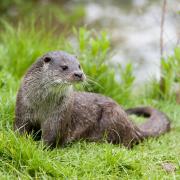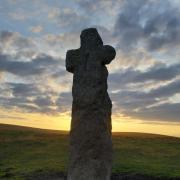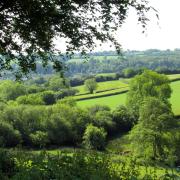For the past two weeks, one of the bird hides I look after in the course of my work on the Axe Estuary has been rammed with people.
Lenses of various lengths and functions protrude from the hexagonal building like extremely expensive quills from a hunkered down porcupine, and every so often a flurry of shutters can be heard from quite some distance. It’s an annual phenomenon, but usually not at this intensity or as early as this.
The quarry for photographers and bird watchers alike are osprey and autumn 2024 seems to be putting on a show we’ve not experienced in living memory.
On Friday I was admiring a column of three birds, an adult and two juvenile ospreys, riding a thermal to gain height and drift off up river. To see all three in my binoculars simultaneously was a delight as previously the river had only accommodated singletons and the occasional brace of birds. Over the following weekend a fourth osprey joined them, making it a record year in terms of numbers. With any luck it’ll also be a record year in terms of time spent on the river; September is the normal month to expect to see osprey on migration through South and East Devon’s estuaries, but here we were in the last fortnight of August and the birds were already in attendance. This couldn’t continue for another month, could it?
That will have to wait to be seen, but why are they here, where have they come from and what does the future hold here in Devon for this magnificent bird of prey?
Our understanding of osprey in the UK comes from the first reintroduction schemes in the remote Scottish highlands, bringing birds from Scandinavia to recolonise spots lost due to human persecution. These early birds were timid of humans, liked the extreme remoteness of the new sites and headed off on their autumn migration south to reach winter grounds of West Africa around Gabon and the Ivory Coast. With such extreme north-south movement of these big birds, range expansion counter-intuitively tends to be largely east-west in nature. You might think a passing osprey would spot a suitable bit of osprey-free habitat while passing overhead and cut its spring migration short, but no – they return to the natal site and spread from there.
Currently the one identifiable bird on the Axe is ringed with a project ring, declaring it to be 3E6 from a Scottish project, but the other two juveniles and the adult could well be from elsewhere.
The population which gives me the most excitement lies across the border in Dorset. The Poole Harbour reintroduction is going well from the original licence granted in 2017. It was last summer when I first noticed young osprey turning up for a day here and there through June and July and this fits with the observation that the birds spread along the broad latitude of their home site. This early assemblage of autumn migration could well be a combination of mooching youngsters and migrating individuals.
The birds are using the estuary as a dive-through fish restaurant, and it’s this behaviour which is particularly exhilarating to witness. Osprey are exclusively fish hawks, with physiological adaptations to help them with this particular prey. Their feet are huge and powerful, and tipped with very long serrated talons to help them grip slippery fish. On the Axe their fish of choice is grey mullet.
Juvenile osprey make several fruitless attempts before snaffling a fish, while the adults usually get the first one they go for. Flying 30 – 40 metres above the river, they slowly bank and twist to spot the fish below. They will then hover for a brief moment, judging distance and depth, before plunging into the water feet first to bind onto the prey, flapping strongly to pull themselves clear back out of the water.
Working with the Devon Osprey project, a nest platform will be installed this winter which is designed to look like a recently abandoned osprey nest. Intended to catch the eye of a young male osprey to nip-in before the former occupant returns, adding sticks and seaweed to the rudimentary nest on the platform is a sure sign that he will stay around in the hope of being seen by a potential mate. This might not happen in the first year or two, but once a pair begin to nest in a location, they will remain faithful to it.
I didn’t think anything could eclipse Devon’s first ever recorded breeding attempt of avocets on the lagoon here, but encouraging an osprey to call this place home would be the stuff dreams are made of!



























